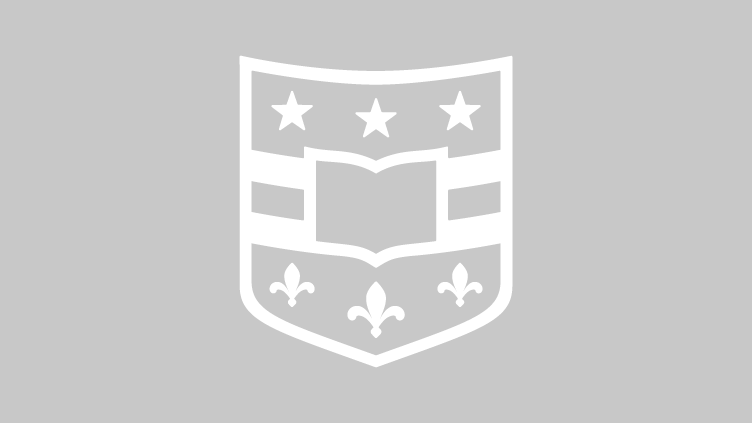Mellon Fellows set to take research in ‘New Directions’
Rebecca Messbarger & Mark Pegg are two of 10 national winners of the Mellon Foundation’s highly selective New Directions Fellowship.
Playwriting competition: Hotchner winners announced
Winners were Highness by Carolyn Kras; Shades of Light Blue by Yuan Ji; Flick by Nicholas A. Loyal; and Chosen Family by Nick Rogers.
Kingsbury Ensemble to conclude season
It will present works of Antonio Vivaldi and Johann Sebastian Bach, today’s most popular composers of the Baroque era.
Sabine Eckmann named director of Mildred Lane Kemper Art Museum
EckmannSabine Eckmann, Ph.D., will become director of the Mildred Lane Kemper Art Museum at Washington University in St. Louis effective July 1, 2005, Chancellor Mark S. Wrighton announced today. Eckmann joined the Kemper Art Museum as curator in fall 1999 and also regularly teaches seminars in the Department of Art History & Archaeology in Arts & Sciences. She succeeds Mark S. Weil, Ph.D., the E. Desmond Lee Professor for Collaboration in the Arts, who has led the museum since 1998. Weil, a longtime faculty member in art history, will retire June 30.
Certain female fish have special mating preference
Male Bahamas mosquitofish (left) chasing a female (right).A biologist at Washington University in St. Louis has shown that for some fish species, females prefer males with larger sexual organs, and actually choose them for mating. That does not exclude males with an average-sized sex organ, called a gonopodium. These fish out-compete the larger-endowed males in a predator-laden environment because they have a faster burst speed than the males with larger genitalia, thus avoiding predators and staying in the mating game.
2005 A.E. Hotchner Playwriting Competition winners announced
The Performing Arts Department in Arts & Sciences has announced winners for the 2005 A.E. Hotchner Playwriting Competition. Four student plays were selected in two categories. Full-length winners were Highness, by junior Carolyn Kras, and Shades of Light Blue, by junior Yuan Ji. Flick, by freshman Nicholas A. Loyal, and Chosen Family, by freshman Nick Rogers, won for short plays.
Adult and child brains perform tasks differently
As our brains mature, we tend to use the red regions more frequently for these certain tasks, using the regions represented in blue less.Children activate different and more regions of their brains than adults when they perform word tasks, according to investigators at Washington University School of Medicine in St. Louis. Reporting in the journal Cerebral Cortex, the researchers say those changes in regional brain activity from childhood to adulthood may reflect the more efficient use of our brains as we mature.
Program finds lost genes in nematode genome
This is *C. elegans*. Its genome was thought to have been completed until a WUSTL computer scientist found otherwise.A computer scientist at Washington University in St. Louis has applied software that he has developed to the genome of a worm and has found 150 genes that were missed by previous genome analysis methods. Moreover, using the software, he and his colleagues have developed predictions for the existence of a whopping 1,119 more genes.
Despite hurdles, human missions to Mars are in the works
Mars Exploration Rover mission scientists remind us that the amazing success of the rovers *Spirit* and *Opportunity* is a harbinger for the day when humans inhabit the Red Planet.The major drawback to a human mission to Mars is preparing for the one to two years of radiation and microgravity exposure that astronauts must endure. While that is a large hurdle, enabling technologies are emerging that should be able to make this goal a reality over the next couple of decades, and America should go for it. That’s the theme of a report from NASA’s 2002 Astrobiology Academy appearing soon as a paper in Acta Astronautica.
Map of life on Earth could be used on Mars
Carinne Blank has a method she uses to date ancient life forms that could be helpful for specimens from Mars.A geologist from Washington University in St. Louis is developing new techniques to render a more coherent story of how primitive life arose and diverged on Earth – with implications for Mars.
View More Stories
